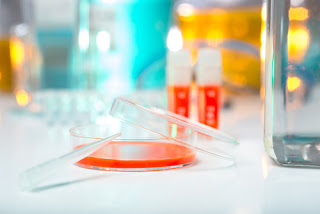Industrial Biotech Conference 2022
Tips for Increasing Transfection Efficiency
Chemical transfection, which relies on the formation of a
condensed complex of positively charged liposomal or
non-liposomal reagents and negatively charged nucleic acids, is the
most common method for delivering foreign genetic material into cultured cells.
Complexes are attracted to the negatively charged cell membrane and potentially
pass through it via mechanisms involving endocytosis and phagocytosis.1
“The negative to positive ratio impacts the complex size and the
overall positive charge. The best ratio is cell type dependent,” says Sandy Tseng, PhD, technical
support scientist, Mirus Bio.
Chemical methods offer a slew of advantages: relatively low cytotoxicity, ease of use, cost effectiveness, low likelihood for unintended mutagenesis, no viral vector involvement, no discrimination of type of nucleic acid, and researcher safety. But the correct protocol needs to be identified and optimized to maximize transfection efficiency and product yield for the cell type and molecule.
“Sometimes, reagents may not work very well, especially for primary
cells that do not divide as rapidly as immortalized cell lines. This may be
because most of the uptake of transfection complexes happens during cell
division when the nuclear membrane breaks down naturally,” says Tseng.
Measuring transfection efficiency
Transfection
efficiency equates to the percentage of cells transfected in the sample.
“Typically, the downstream functional
effect is measured,” says Tseng.
Frequently
employed, easily trackable fluorescent-based reporter assays include green fluorescent protein (GFP), luciferase, β-galactosidase
(β-gal), and secreted embryonic alkaline phosphatase (SEAP). In other cases, Western blots or immunostaining can quantify protein expression
and quantitative PCRs can be used to track transfected nucleic acid levels.
An
overlooked method to calculate transfection efficiency is the use of
fluorescently-labeled nucleic acids, which enables tracking of intracellular
delivery. “You need uptake before function,” adds Tseng.
Achieving optimal and consistent transfection efficiency
Transfection efficiency depends on a number of factors.
“For most adherent cells it is standard to split them the day
prior so they will be ~ 80% confluent at the time of transfection. Different
cells might double differently or behave differently at this confluency. For
transfection complexes, various reagents and nucleic acid ratios should be
tested,” says Tseng. “Plus some reagents work better with larger nucleic acids
than smaller ones, such as siRNA.”
“Trivial
protocol points can have a major impact. Be as consistent as possible. You want
the cells to be a similar passage number, and the media, growth container, FBS
batch, and the complex conditions should also be the same between replicate
transfection experiments,” says Tseng. “Manufacturers provide assistance and
literature searches using ‘your cell type of interest’ and ‘transfection’ as
key words will often yield helpful protocol pointers for your cell type of
interest.”
A recent study evaluated mixing with a pipette versus a dropwise addition in the preparation of polyethylenimine (PEI) and plasmid DNA polyplexes. These subtle changes markedly influenced the physicochemical properties of the transfection complex and resulting performance.
Optimizing protocols
An operational flow termed “Design of Transfections” (DoT) based on Design of Experiment (DoE) methods, was used for specific transfection modeling and identification of optimal conditions. The workflow was applied to optimize a PEI protocol for extremely difficult-to-transfect neural progenitors. Key influencing factors, including concentration and type of PEI, DNA concentration, and cell density, were simultaneously varied and a simple, efficient, and economical protocol established.
Source: https://4dg2.short.gy/LAhPxY
Conference Name: 27th World Congress on Industrial Biotechnology
November
https://4dg2.short.gy/indus




Comments
Post a Comment